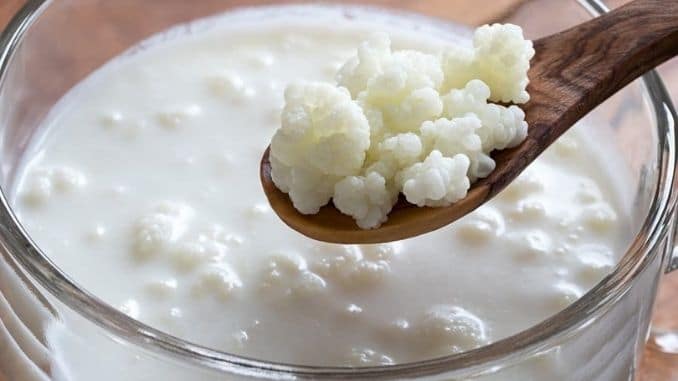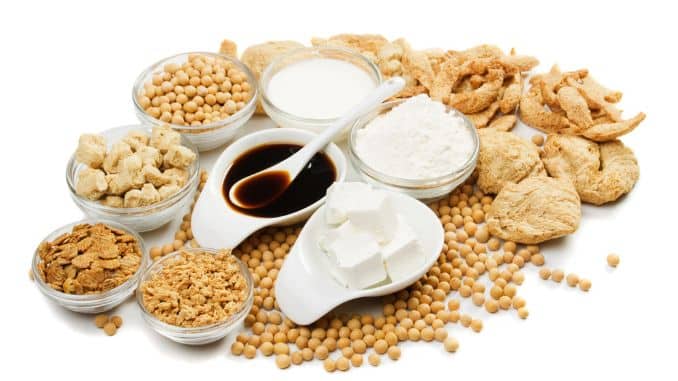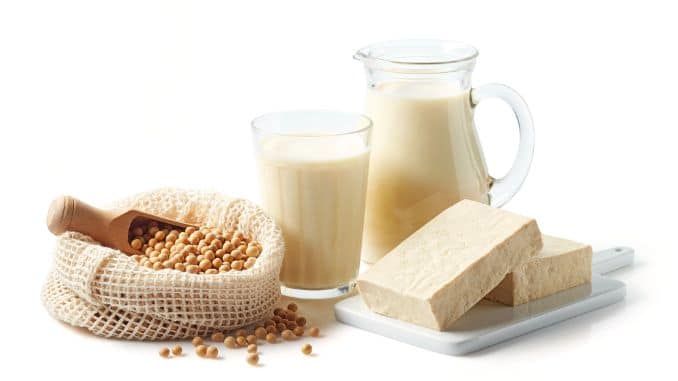
For years, soy was the go-to protein for those who wanted to avoid animal protein sources. Soy burgers were all the rage as well as tofu. Things have changed, however, and revealing new information has surfaced about it. Much of it depends on how it is prepared, as we have learned. So, let’s look at the debate behind the benefits — and potential harm — of soy.
It’s A Bean
Anything titled “soy” comes from the soybean (or soya bean), and just like wheat products, these products also vary widely. The soy legume is native to East Asia, and there’s evidence that humans began domesticating the plant as far back as 7000 B.C. Whereas, in modern times, the main countries that grow soybeans are the United States, Brazil and Argentina.
Soybean meal is indeed a popular and inexpensive source of protein, and it’s consumed worldwide. It’s also used extensively to feed animals. Many meat and dairy substitutes contain textured vegetable protein, which these products also include. The soybean is indeed rich in phytic acid, dietary minerals and B vitamins. Milk and tofu are certainly examples of nonfermented soybean products. Fermented soy foods also include sauce, bean paste, natto and tempeh.
As we’ll see, all of these aspects of the soybean can have a potential impact on your health.
Healthy Soy
Many Asian countries, such as Japan, have a diet rich in soy. Due to the robust health of people living in those countries, the Western world adopted this into their diet many years ago. However, how the crop is grown and processed makes a big difference regarding health benefits.
For starters, soy grown organically — no chemical fertilizers or pesticides — carries the highest quality. Also, some experts warn that genetically modified foods may negatively affect your digestive system, such as decreasing the probiotic benefit to your gut.
What Is Gut Flora?
Your gut flora is a diverse community of microorganisms that live in your digestive tract. Also, the gut flora is almost like a separate organ in your body entirely of bacteria. For instance, some of these organisms help your intestines process dietary fiber into short-chain fatty acids making them easier to absorb.
Intestinal bacteria also help you synthesize vitamin B and vitamin K and metabolize bile acids, sterols and xenobiotics. The gut flora function is so complex that it works almost like an extra endocrine organ. We see this even more clearly when the gut flora is disrupted since this may lead to inflammatory and autoimmune problems.
Disturbance of your gut flora could contribute to these disease processes:
- Obesity
- Diabetes
- Heart disease
- Crohn’s disease
- Ulcerative colitis
- Colon cancer
- Anxiety, depression and autism
- Arthritis
What Are Probiotics?
Since your gut has millions of microorganisms working in your favor, some scientists observed that eating bacteria might be beneficial. Now, before you turn up your nose, don’t forget that bacteria are normally found in yogurt and milk. Some of these bacteria, called probiotics, are indeed believed to offer you a health advantage.
The benefits of probiotics may include:
1. Strengthen Immune Function
2. Prevent Urinary Tract Infection
3. Improved Gut And Bowel Function
4. Decrease Symptoms Of Irritable Bowel Syndrome
5. Reduce Eczema Symptoms
6. Reduce Food Poisoning
How does this all relate to soy? First of all, genetically modified sources (GMO) may decrease their probiotic benefit. Plus, it is most nutritious when it’s fermented. Not surprisingly, fermenting is a process similar to what happens when milk becomes yogurt. Fermented soy, such as natto, is rich in probiotics and vitamin K2. Even more, vitamin K2 may preserve your bones, keep brain cells healthy, and help you heal from injury.
If you consume soy in the natto form, then, yes, it’s very good for you.
Other Great Sources Of Probiotics
Natto isn’t the only source of probiotics.
Consider these foods to boost your gut flora benefits:
-
Kefir
This yogurt-like fermented dairy product is also good for those who are lactose-intolerant.
-
Sauerkraut
The fermented cabbage is also rich in vitamin C, and may help you fight off the common cold.
-
Kimchi
The spicy Korean version of sauerkraut.
-
Coconut Kefir
Made from coconuts and kefir grains fermented together.
Other Soy Products
Unfortunately, the Western world consumes the majority of these products without fermentation. This includes milk and also other products that use it as a protein supplement (soy burgers). However, the problem with these foods is that they don’t offer the probiotic benefit of fermented soy. Plus, if they come from a non-organic source, the benefit is even less.
Moreover, the other — and more serious — problem with most modern soy products is that they contain phytoestrogens. Your body also recognizes these compounds as estrogen. For men, this could mean you end up having too much estrogen in your body, giving you female sex characteristics. One example, there have been reports of milk-causing gynecomastia (breast development) in men.
For women, increased phytoestrogen also intake may elevate your risk of breast cancer, cervical cancer, polycystic ovary syndrome and hormone imbalance.
What Are Some Alternatives To Soy?
One of the things that attract people to soy is that it’s a non-animal source of protein. Plus, it’s low in fat. However, unless you consume the fermented non-GMO form of soy, you may be exposing yourself to a health risk.
Some excellent vegetable choices that you can substitute for soy are:
1. Coconut Milk
2. Lentils
3. Quinoa
4. Black Beans
5. Almonds
6. Brown Rice
What About Tofu?
If you like Asian or Southeast Asian food, you’ve probably tried these white food blocks. Tofu, also known as bean curd, is made by coagulating soy milk and then pressing the resulting curds into soft white blocks.
However, tofu is not a fermented soy product. This implies that it may contain high levels of harmful phytoestrogens, and it is usually derived from GMO sources. Furthermore, tofu is especially rich in soy is oflavone genistein which can decrease thyroid hormone production and cause hypothyroidism (underactive thyroid).
Fermenting Is The Key
Tofu, edamame, and soy milk are unfermented soy products. These should probably be avoided. Miso, natto, tempeh and tamari are fermented products. Moreover, all soybeans (even organic, non-GMO ones) naturally contain potentially harmful phytoestrogens. Fermentation certainly transforms regular products into healthy foods.
Why Was Soy Considered To Be Healthy?
Years ago, soy was considered a wonder food. It also advertised it as a solution to everything from world hunger to heart disease, being low-fat, high-protein, and available to the masses. So, some blame aggressive agriculture industry marketing for increasing its acceptance in our diets. Baby formula is certainly a prime example. Parents who feed their infants soy-based milk might also want to consider other alternatives.
Hidden Sources Of Soy
Given that soy is so cheap and easy to work with, it has found its way into a wide range of food products.
You might find soy in:
- Breadcrumbs, cereals, pastries and crackers
- Hydrolyzed plant protein (HPP), hydrolyzed soy protein (HSP) and hydrolyzed vegetable protein (HVP)
- Imitation dairy food
- Infant formula, nutrition supplements for adults and children
- Meal replacements and frozen dinners
- Meat products with fillers like frozen burgers
- Nutrition supplements and vitamin pills
- Sauces: shoyu, tamari, teriyaki and Worcestershire
- Artificial fish and meat products: fake crab meat, imitation bacon bits, veggie burgers and patties
- And Stews and gravies
Surprising Source Of Soy
The reality is that most soy meal ends up as animal feed. This means that you could be eating meat from animals fed largely on a soy diet. Now, while this is not the same as directly eating these products, some studies have revealed these elements found in chicken that have been raised on this diet.
Moreover, the United States Food & Drug Administration does not require any product labeling if livestock has been fed with it. Perhaps the only way to avoid this potential source is by eating 100 percent grass-fed beef. Even when labeled organic or free-range, a chicken may still be fed a diet. Don’t forget that this way might also affect eggs.
How About Soy Allergy?
Soy allergy is like any other food allergy. It could manifest itself as a rash, upset stomach, diarrhea, nausea, vomiting, or breathing problems. If you are identified as having an allergy, make sure you avoid the hidden sources of soy listed in this article.
Conclusion
OerIf you want to know what foods will help you restore your natural vitality and get slim and stay slim, then check out the Best Foods That Rapidly Slim & Heal in 7 Days program, here!






